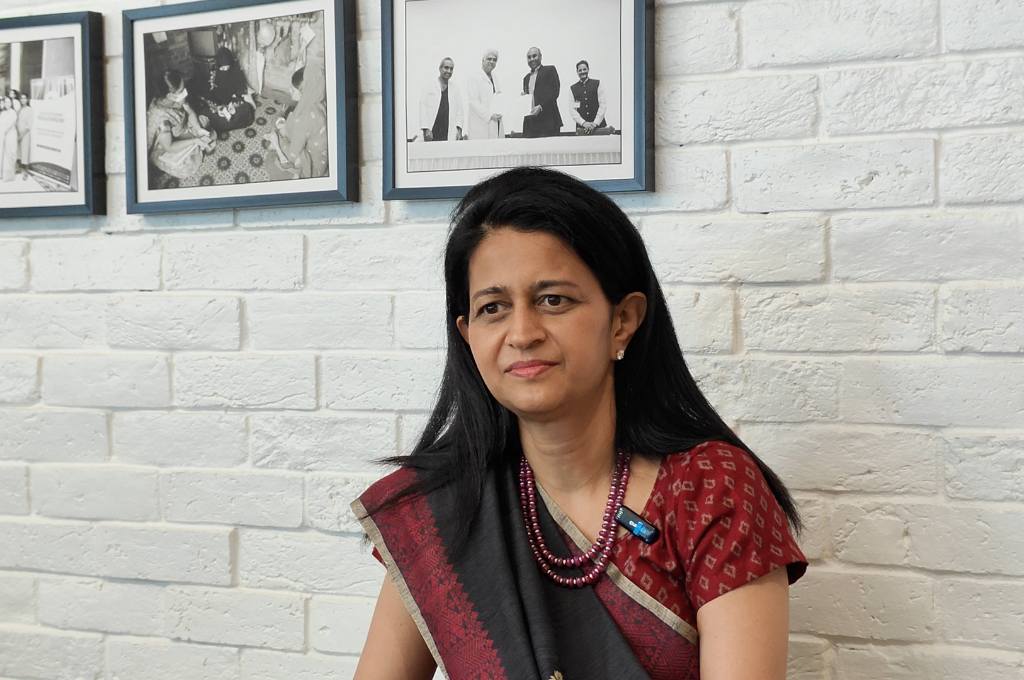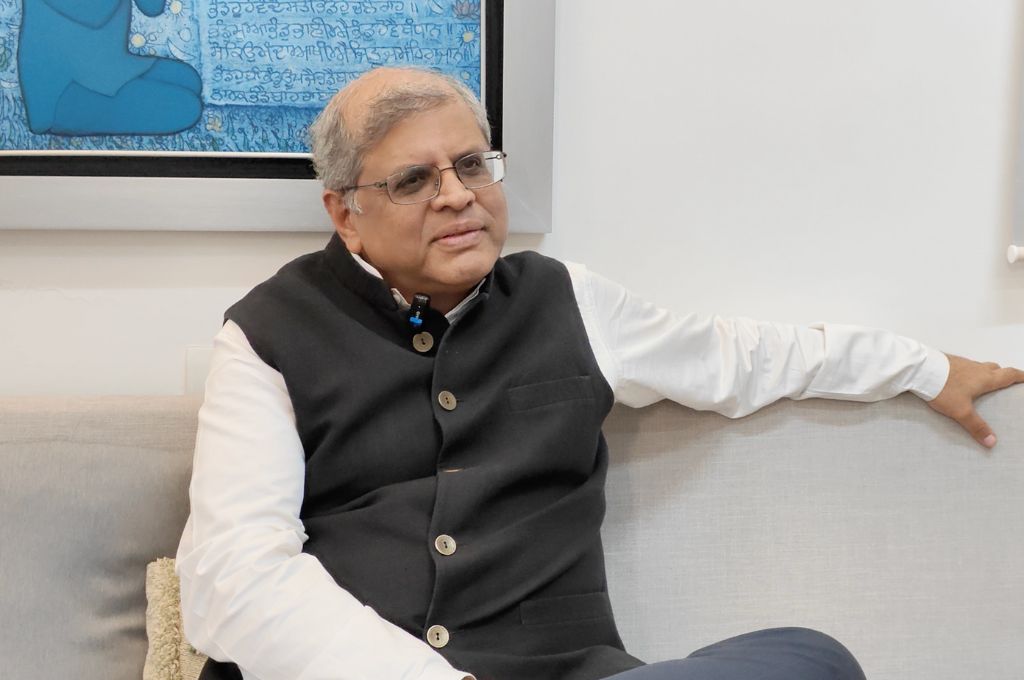Pooled funding from multiple donors has historically been used in emergency response situations, such as natural disasters and human made conflicts, to get timely resources and results on the ground.
However, the principle of pooling funds is increasingly being deployed by donors on issues that go beyond humanitarian aid. They see multiple advantages to this approach: they can take a comprehensive approach to a problem, address multiple facets instead of providing symptomatic relief, and have flexibility in supporting areas aligned to their priority areas.
Deployed well, pooled funds can improve efficiencies, limit duplication of efforts amongst donors, lower transaction costs with economies of scale, and ensure better risk management if governed well.

Pooled funding allows donors to take a comprehensive approach to a problem and address multiple facets rather than provide symptomatic relief. Image Courtesy: Aseema Charitable Trust)
The different models
There are several ways in which donors can pool funds. Their impact and success depend on a range of factors, some of which are illustrated in this article.
1. Classic co-funding refers to a large-scale programme with two (or more) donors bringing in a similar quantum of funds.
- Funds may or may not be centrally pooled in one place–donors may hand over the baton from one funding cycle to the next.
- Key decisions are usually run through steering committees with representation from donors.
- This model may involve smaller, sub-contracted grants as well.
This model is widely known and adopted, especially since there is an emerging practice amongst Indian donors today to support no more than 40 percent of a programme’s cost. The onus usually lies on the implementing partners to find matching donors or use their own funds to finance the rest of the programme.
2. A managed fund entails a community of donors coming together for a common cause and common set of outcomes.
- Funds are typically pooled at a central repository and are managed either by a professional agency or a dedicated programme team based at the lead donor.
- The governance structure for this kind of a model involves a steering group, programme management group, an advisory board and an external evaluation agency.
The Dasra Giving Circle and the recently launched Co-Impact (from the creators of The Giving Pledge) are examples of this kind of funding.
3. An independent platform differs from a managed fund primarily in terms of the legal structure. In this case as well, a common cause and ambitious impact outcomes bring together a community of donors.
- The operational model, however, comprises a new and separate legal entity that is set up for developing and implementing strategy towards the intended impact goals.
- Oversight and control for an independent platform involves varying combinations of boards, advisory groups, steering committees, selection panels and programme management teams.
Examples of independent platforms include Ashoka University and the Independent and Public-Spirited Media Foundation (IPSMF).
Ashoka University is India’s first collaboratively funded, liberal arts private university with over 90 donors bringing in INR 750 crore.
IPSMF is a foundation with contributions from several Indian philanthropists to fund independent journalism. Decisions are taken by an independent operating team and the donors have no influence over the organisations funded.
What to ask when picking a model
Each of these funding mechanisms have their own unique compelling factors, including alignment of purpose, structure, governance and systems for operational excellence, that will determine their sustained impact and ultimate success.
Within these factors, we have listed some guiding questions that we can ask to arrive at the funding model that would be best suited to help achieve the results we seek in our spheres of work.
Alignment on purpose (across donors, boards/committees and implementation teams)
- Is there a shared understanding of the problem?
- Is there a consistent articulated vision of what impact would look like? Is it tangible?
- Is the overall purpose politically neutral? Is it likely to have broad-based resonance or does it appeal to a restricted, finite group of people?
- Are there a couple of well-regarded core champions for the idea who can drive peers to contribute and collaborate?
- Are the motivations of the core champions clear and aligned?
- Is there a broad strategic framework that defines what the vehicle would do and not do?
- Is there an in-principle agreement on the risk(s) the collective is willing to take?
Alignment on metrics (across donors and implementation teams)
- Is there a clear set of cause-impact hypotheses in place?
- Are outcomes and impact metrics emerging from the core hypotheses defined?
- Are operating team performance metrics clearly defined and aligned with the above?
- Are the metrics of impact in sync with the proposed timeline for engagement? Are they feasible given the time frame?
Oversight and governance (board, selection/ steering/ advisory committees)
- Should the board/steering committee be constituted to maximise for credibility or practice?
- If the board is maximised for credibility, is the operating team strong enough on the subject matter? Does it need an advisory panel?
- If the board is maximised for practice, how is the operating team empowered with freedom to execute?
- Is the board in sync with the risk appetite of the overall partnership?
- Does the board define boundaries of what it would do and what not?
- Are clear firewalls in place between boards, operating teams and external experts/selectors?
Selection
- A grantee selection panel or committee is one way to build in independence into the model. The composition of this panel is an important determinant to factor in.
- Is a distinct selection team of external experts in place? Do they have a clear set of criteria for selection based on the overall strategy?
- Is selection done internally by the programme team based on an approved set of criteria determined by strategy?
- Is the external panel balanced between practitioners and subject matter experts?
- Is the selection of panel members free from bias and influence?
Operating processes
- Is a team or organisation structure in place for operationalising the strategy?
- Are clear and distinct roles in place for core members?
- Does the team have the right balance of generalists and specialists?
- Are effective management systems in place for periodic tracking of deliverables and course correction?
- Is the operating team suitably empowered to take core implementation decisions?
Expertise
- Are core subject matter experts in-house or external?
- Are subject matter experts represented through the board, selection panels and operating teams? Or only at certain levels?
Funding
- Should a bulk of funding to be raised upfront? Or is the mandate to seed, prove and then scale?
- Who should take the onus for fund raising? Core champions or others?
- Should there be a consistent fundraising momentum with new donors being added each year?
- Should the mix of funders be a consistent cohort or a mindful mix? Are individual philanthropists, institutional donors, CSR natural allies and partners?
- Are there clear benefits—wider, deeper impact, efficiency, influence, etc—for the funders who join the cohort?
- Is there any potential conflict of interest between the cause supported by donors and their ‘core business’? When does this become a deal breaker?
What is the expectation from government funding? Are areas likely to get government attention and funding more likely to be successful for pooled funding mechanisms?
Pooled funding vehicles are excellent venues for learning and we believe that these models are a natural progression as philanthropy moves to tackle difficult systemic issues.
However, what holds true for all such pooled models and must be a vital first step, is asking the right questions about their design, structure and governance. We hope that this article provides a starting point for your own pooled funding journey.





